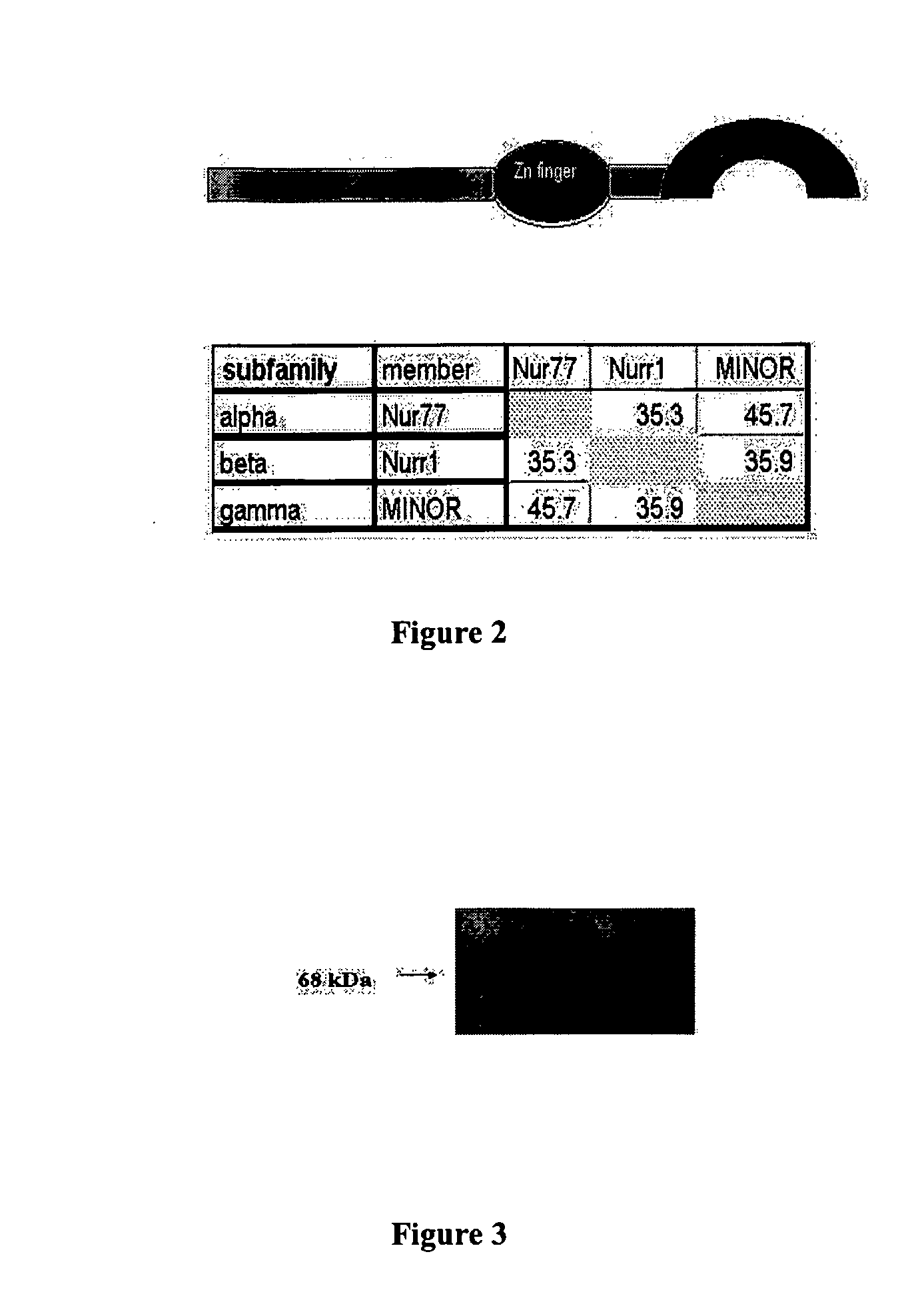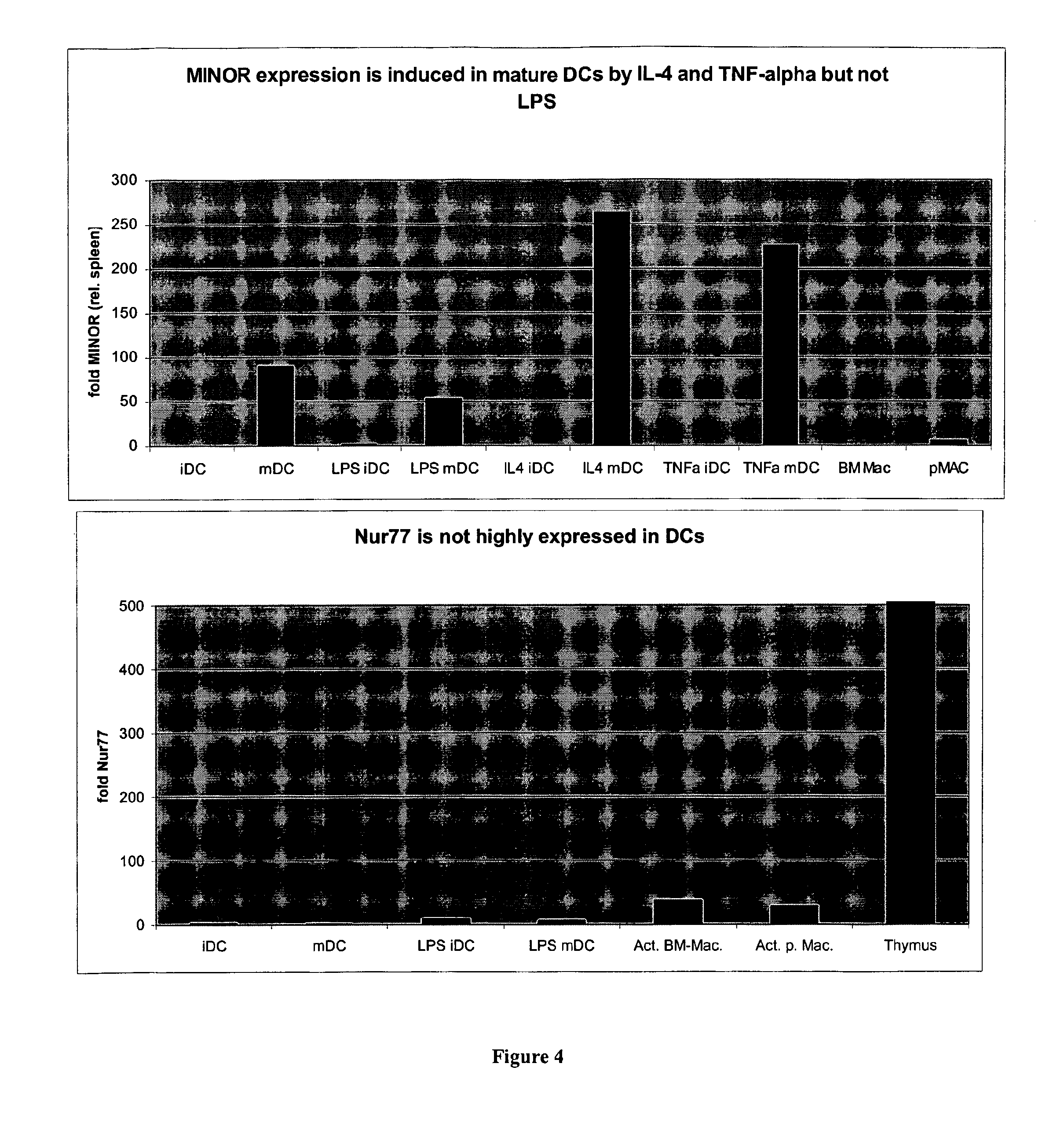Immune Modulation By Regulating Expression Of The "Minor" Gene In Immune Dendritic Cells
a technology of immune dendritic cells and immune modulation, which is applied in the direction of biocide, antibody medical ingredients, genetic material ingredients, etc., can solve the problems of unexplored dc lifespan regulation, difficult to achieve highly potent and durable anti-tumor immune responses through vaccines, and inability to control t cell activation. , to achieve the effect of improving dc-based therapies and limiting uncontrolled t cell activation
- Summary
- Abstract
- Description
- Claims
- Application Information
AI Technical Summary
Benefits of technology
Problems solved by technology
Method used
Image
Examples
example 1
Analysis of Genes Upregulated in DCs
[0123] DCs have many known properties that allow them to be potent APCs. Not surprisingly, in gene analysis, molecules such as CD86, MHCII, and CD40 become upregulated upon activation. In order to elucidate other genes that are important for DC function, a subtractive hybridization analysis was undertaken, in which gene expression by activated DCs was compared to that of activated macrophages.
[0124] A) MINOR Expression in Mature DCs
[0125] Initial studies utilized a subtractive hybridization strategy to identify genes that were selectively upregulated in mature DCs relative to activated macrophages. The goal of the subtractive hybridization study was to identify new genes that were specifically upregulated in mature DCs as compared to less potent APCs (macrophages) and, thus, might contribute to the unique function of these cells.
[0126] The basic subtractive hybridization strategy for identifying genes particular to DCs has been previously publ...
example 2
MINOR Sequence Identity and Expression
[0134] MINOR is a member of the Nur77 steroid receptor family. FIG. 2 shows a cartoon structure of MINOR, a 627-aa protein composed of an N-terminal transcriptional transactivating domain, a central zinc finger DNA binding domain with nuclear localization signals (aa290-361), and C-terminal steroid ligand binding domain (aa440-595). The figure further shows the results of protein sequence alignment of MINOR with other members of the Nur77 / Nurr1 steroid hormone receptor family performed, as well as % identity to the most similar sequences.
example 3
MINOR Expression at the Protein Level in Mature DCs
[0135] To verify that protein is translated for MINOR, various available antibodies for this gene family were tested. An antibody that reacts to the rat NOR-1 and mouse MINOR was identified. Utilizing this antibody, protein lysates from DCs were evaluated to assess protein expression. Mouse BMDCs were generated by standard methods and harvested at day 8. Lysates were prepared in RIPA buffer, the protein was quantified, and run on an SDS-PAGE gel. Following transfer, the blot was probed with the anti-NOR1 antibody (Santa Cruz). FIG. 3 shows an immunoblot with the predicted size band of 68 kDa present in mature DCs. MINOR is, indeed, expressed at the protein level in mature DCs.
PUM
| Property | Measurement | Unit |
|---|---|---|
| Time | aaaaa | aaaaa |
Abstract
Description
Claims
Application Information
 Login to View More
Login to View More - R&D
- Intellectual Property
- Life Sciences
- Materials
- Tech Scout
- Unparalleled Data Quality
- Higher Quality Content
- 60% Fewer Hallucinations
Browse by: Latest US Patents, China's latest patents, Technical Efficacy Thesaurus, Application Domain, Technology Topic, Popular Technical Reports.
© 2025 PatSnap. All rights reserved.Legal|Privacy policy|Modern Slavery Act Transparency Statement|Sitemap|About US| Contact US: help@patsnap.com



